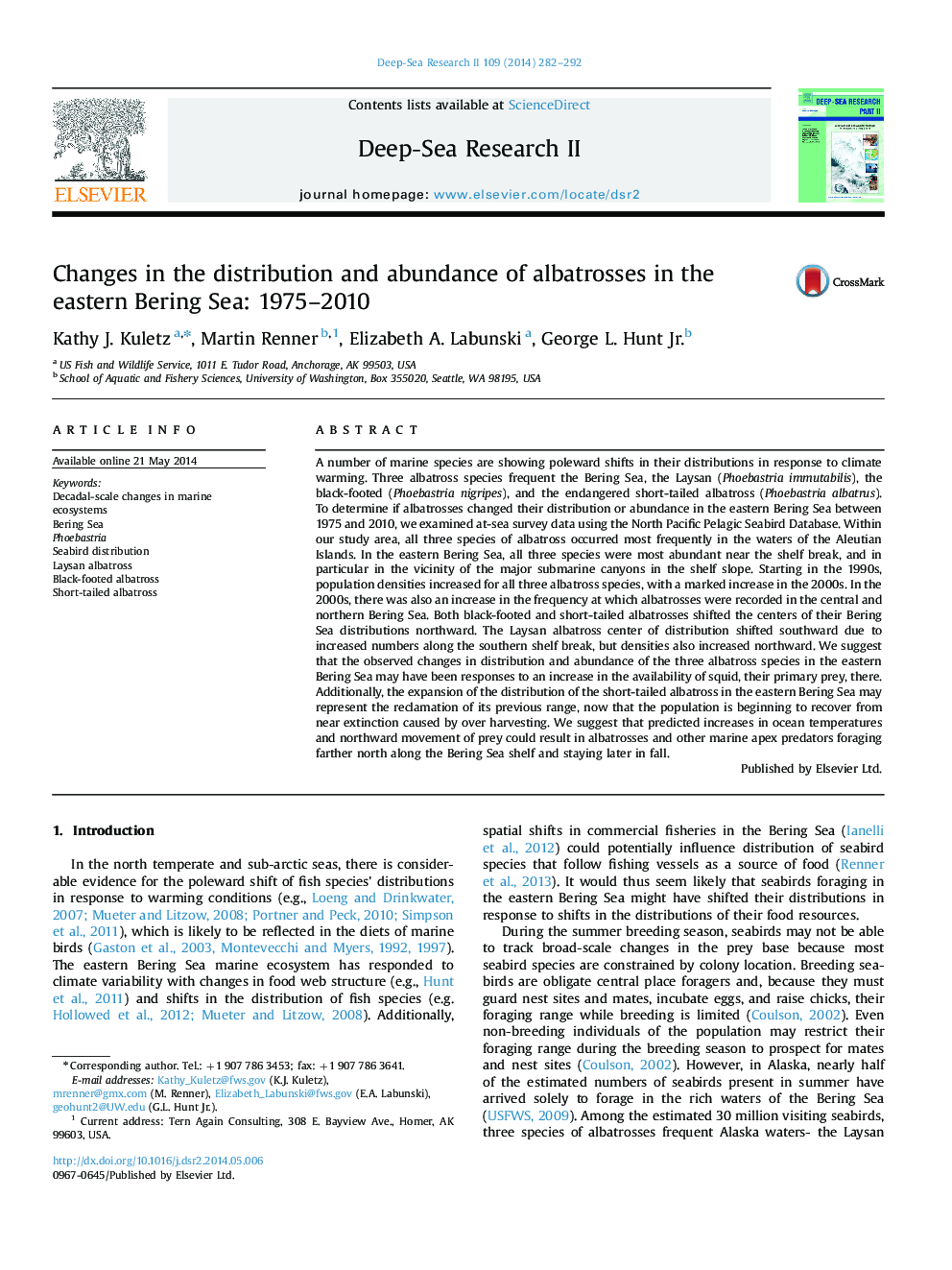| کد مقاله | کد نشریه | سال انتشار | مقاله انگلیسی | نسخه تمام متن |
|---|---|---|---|---|
| 6384196 | 1626431 | 2014 | 11 صفحه PDF | دانلود رایگان |

A number of marine species are showing poleward shifts in their distributions in response to climate warming. Three albatross species frequent the Bering Sea, the Laysan (Phoebastria immutabilis), the black-footed (Phoebastria nigripes), and the endangered short-tailed albatross (Phoebastria albatrus). To determine if albatrosses changed their distribution or abundance in the eastern Bering Sea between 1975 and 2010, we examined at-sea survey data using the North Pacific Pelagic Seabird Database. Within our study area, all three species of albatross occurred most frequently in the waters of the Aleutian Islands. In the eastern Bering Sea, all three species were most abundant near the shelf break, and in particular in the vicinity of the major submarine canyons in the shelf slope. Starting in the 1990s, population densities increased for all three albatross species, with a marked increase in the 2000s. In the 2000s, there was also an increase in the frequency at which albatrosses were recorded in the central and northern Bering Sea. Both black-footed and short-tailed albatrosses shifted the centers of their Bering Sea distributions northward. The Laysan albatross center of distribution shifted southward due to increased numbers along the southern shelf break, but densities also increased northward. We suggest that the observed changes in distribution and abundance of the three albatross species in the eastern Bering Sea may have been responses to an increase in the availability of squid, their primary prey, there. Additionally, the expansion of the distribution of the short-tailed albatross in the eastern Bering Sea may represent the reclamation of its previous range, now that the population is beginning to recover from near extinction caused by over harvesting. We suggest that predicted increases in ocean temperatures and northward movement of prey could result in albatrosses and other marine apex predators foraging farther north along the Bering Sea shelf and staying later in fall.
Journal: Deep Sea Research Part II: Topical Studies in Oceanography - Volume 109, November 2014, Pages 282-292